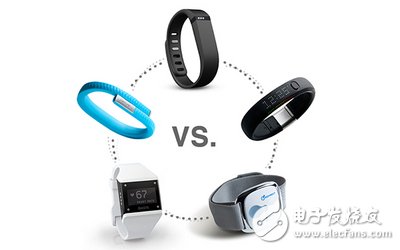Shipments of wearable peripheral accessories will grow rapidly. As wearable devices are equipped with Bluetooth low-power (BLE) gains, end-users are also eager to purchase Bluetooth-enabled low-power peripheral accessories, especially for small peripherals, easy to carry, and power-hungry. And the price is lower, so sales are expected to exceed wearables.

Zenko Electronics’ Zong Santian said that the shipments of wearable devices and its peripheral accessories will show explosive growth in 2015, mainly because Android, iOS and Windows operating systems have all supported Bluetooth low energy, allowing wearable devices. And its peripheral accessories can achieve more, more convenient and cool application services through Bluetooth low-power technology, and increase the willingness of end consumers to purchase wearable devices and their peripheral accessories.
Zeng Santian further pointed out that the size of wearable devices is more than that of peripheral accessories. Consumers consider portability. They often choose different peripheral accessories depending on different situations. For example, they may only carry heartbeats during exercise. In other words, the future will be single. End users may purchase more than one wearable device peripheral accessory, so the wearable device peripheral accessories will be sold even higher than the wearable device.
Optimistic about the huge business opportunities in the wearable device peripheral accessories market, the company has released the Bluetooth low-power radio frequency (RF) transceiver chip A7107 in line with the Bluetooth 4.0 specification, and obtained the original design manufacturer (ODM) of the wearable device peripheral accessories such as the heartbeat band. Design In is expected to be shipped in large quantities in the second half of the year, with considerable revenue contribution.
It is understood that the long-established 2.4GHz RF chip protocol (Protocol) is similar to Bluetooth, and has accumulated 3 to 4 years of experience in Bluetooth product development. In 2013, it became the first in China to pass the Bluetooth Technology Alliance (SIG). ) BQB (Bluetooth Qualified Body) and QDID (Qualified Design ID) certified chip vendors.
Zeng Santian revealed that in addition to continuing to develop customized and cost-effective products for different customer groups, the company will also launch a Bluetooth low-power chip solution that integrates wireless charging and power management chip (PMIC). Seize the market for accessories for wearable devices.
![]()
Wi-Fi Internet access can be simply understood as wireless Internet access. Almost all smart phones, tablets and laptops support Wi-Fi Internet access, which is the most widely used wireless network transmission technology today. In fact, it is to convert the wired network signal into a wireless signal, just like the introduction to everyone at the beginning, use a wireless router for the relevant computers, mobile phones, tablets, etc. that support its technology to receive. If the mobile phone has Wi-Fi function, when there is Wi-Fi wireless signal, it can go online without going through the network of China Unicom, saving the data charge.
Wireless network wireless Internet access is more commonly used in big cities. Although the wireless communication quality transmitted by Wi-Fi technology is not very good, the data security performance is worse than Bluetooth, and the transmission quality needs to be improved, but the transmission speed is very fast, which can reach 54Mbps. Personal and social information needs. The main advantage of Wi-Fi is that it does not require wiring and can not be restricted by wiring conditions, so it is very suitable for the needs of mobile office users, and because the transmit signal power is less than 100mw, which is lower than the mobile phone transmit power, Wi-Fi Internet access is relatively It is also the safest and most healthy.
However, the Wi-Fi signal is also provided by the wired network, such as the ADSL at home, the broadband of the residential area, etc. As long as a wireless router is connected, the wired signal can be converted into a Wi-Fi signal. Many cities in developed countries abroad are covered with Wi-Fi signals provided by the government or large companies for residents to use. There are also many places in my country that implement "wireless city" projects to promote this technology. In pilot cities where 4G licenses have not been issued, many places use 4G to Wi-Fi for citizens to try.
XPON WIFI ONU, GEPON WIFI ONU, XPON Router ONU,WIFI ONU XPON, ONU XPON WIFI
Shenzhen GL-COM Technology CO.,LTD. , https://www.szglcom.com